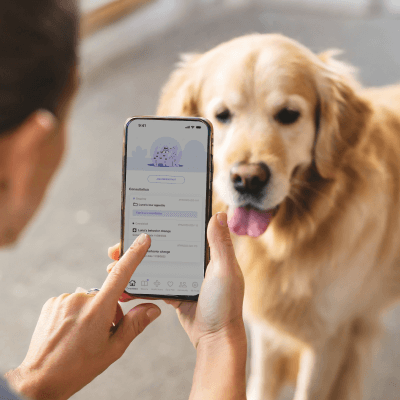
More than 66 percent of households in the United States have pets—that’s nearly 87 million households in total. But pet care and pet health is a fractured industry. Pet insurance is relatively underutilized, with just about three percent of households with pets opting in for coverage. And veterinary care is expensive. Few pet families are prepared for large expenditures for services like tests and surgeries.

Consider this scenario: studies show that when the cost of saving an animal reaches $5,000, most pet owners decide to stop treatment. This emotional dilemma—how much can I spare to help my sick animal?—is something many pet caregivers face when assessing the financial aspect of pet parenting.
What if there were a solution that allowed pet owners to continually monitor their pet’s health while also guiding them through complex veterinary health care considerations? That’s the question three ID students started with when considering their current or past experiences as pet owners.
Sunmin Ko (MDes 2023), Han Wen Chang (MDes + MBA 2024), and Eunji Kim (MDes 2024) explored potential answers in Jennifer Levin and JoEllen Kames’ Interaction Design Workshop. The class, co-taught by Kames, an industry leader with experience as Director of User Experience Design for the AI Cloud at Salesforce, encourages students to explore the principles of interaction design. Kames challenges students to bring compelling UX designs to life to create experiences that are not only easy to use but solve problems in a delightful and engaging way.
Getting Up To Speed
As they bonded over the universal dilemma of deciding between rushing pets to the vet or monitoring them at home, Sunmin, Han Wen, and Eunji began brainstorming ideas for features they would want in a product to help them make better decisions for their furry friends. From there, Pawsisstant was born.
An innovative app-based pet care platform that utilizes generative AI to revolutionize how pet caregivers confidently manage their animals’ wellbeing, Pawssistant is designed to provide real-time support and transform complex health data into actionable insights, thereby enabling informed and confident decision-making for pet owners.
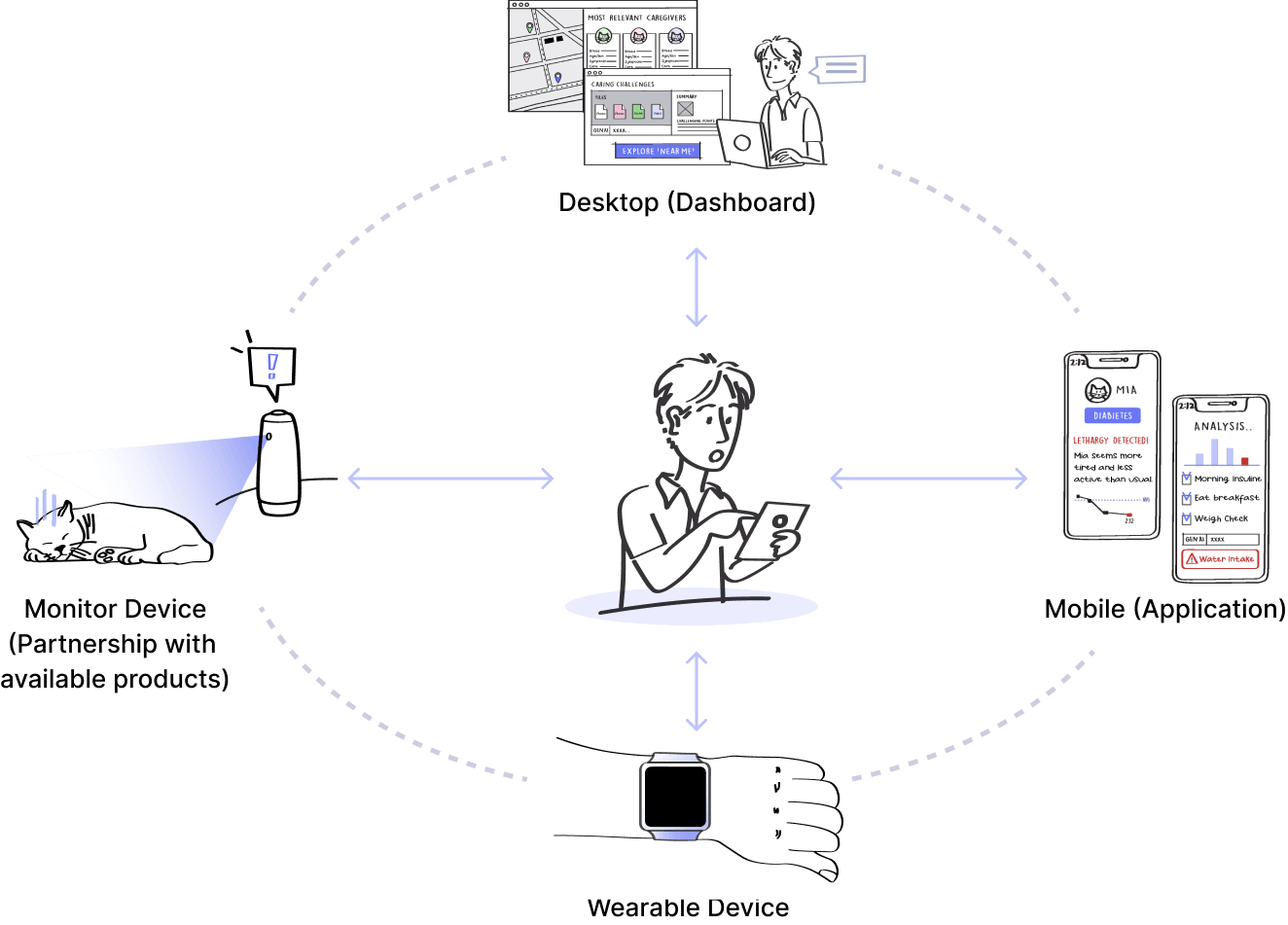
An illustration of the various ways users will interact with Pawsisstant.
The multimodal experience includes a desktop dashboard, a monitoring device (in collaboration with available products), a mobile application, and a wearable device. Pawssistant tracks the entire pet care journey, from bringing the pet home to bidding a heartfelt farewell. It plays a vital role in emergency response, long-term care planning, and navigating the delicate balance between cost and consequence. Users can also track their pet’s wellbeing over time, visualizing graphs that outline recommended actions and potential outcomes.
Visualizing a Lifelong Plan
One of the app’s key features allows pet owners to weigh the cost vs. pet wellbeing in a lifelong plan because the decision touches not only on financial constraints but also the balance between cost and care. A lifelong plan showcases the consequence of care and cost, helping caregivers make better decisions.
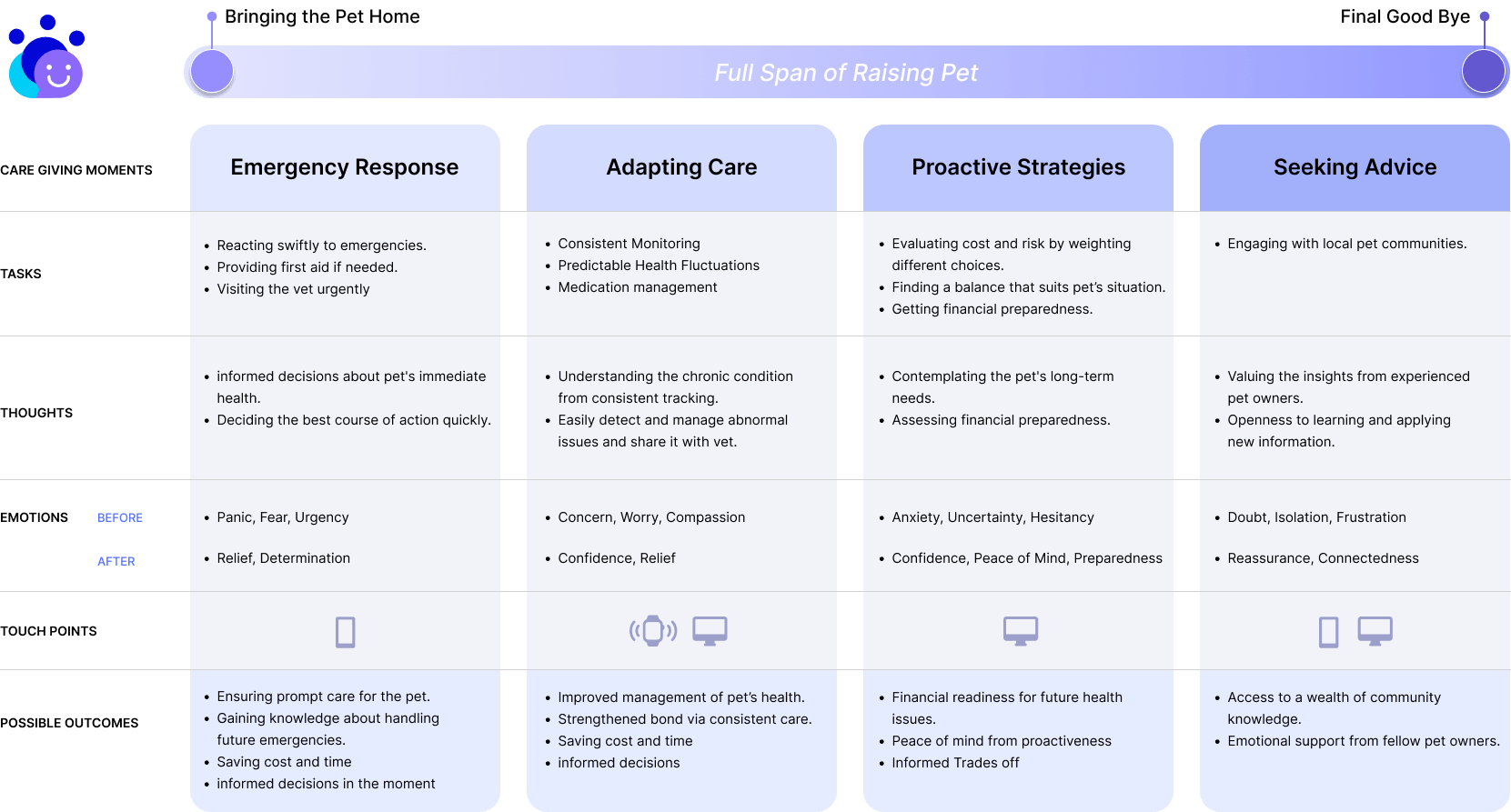
Journey Map for Pet Owners
Understanding User Preferences
In their quest to bridge the gap between advanced AI capabilities and the inherently human aspects of pet caregiving, Sunmin, Han Wen, and Eunji worked with both pet owners and veterinarians to understand their needs and pain points. By talking to pet owners, they determined that caregivers want support and information to make informed decisions, ultimately enhancing the wellbeing of their beloved pets.
As a result of that input, the product can help pet owners get reliable and relevant information rather than turn to non-personalized Google results. Providing multiple levels of information (user feedback, veterinarian opinions, data support) allows owners to weigh their decisions quickly.
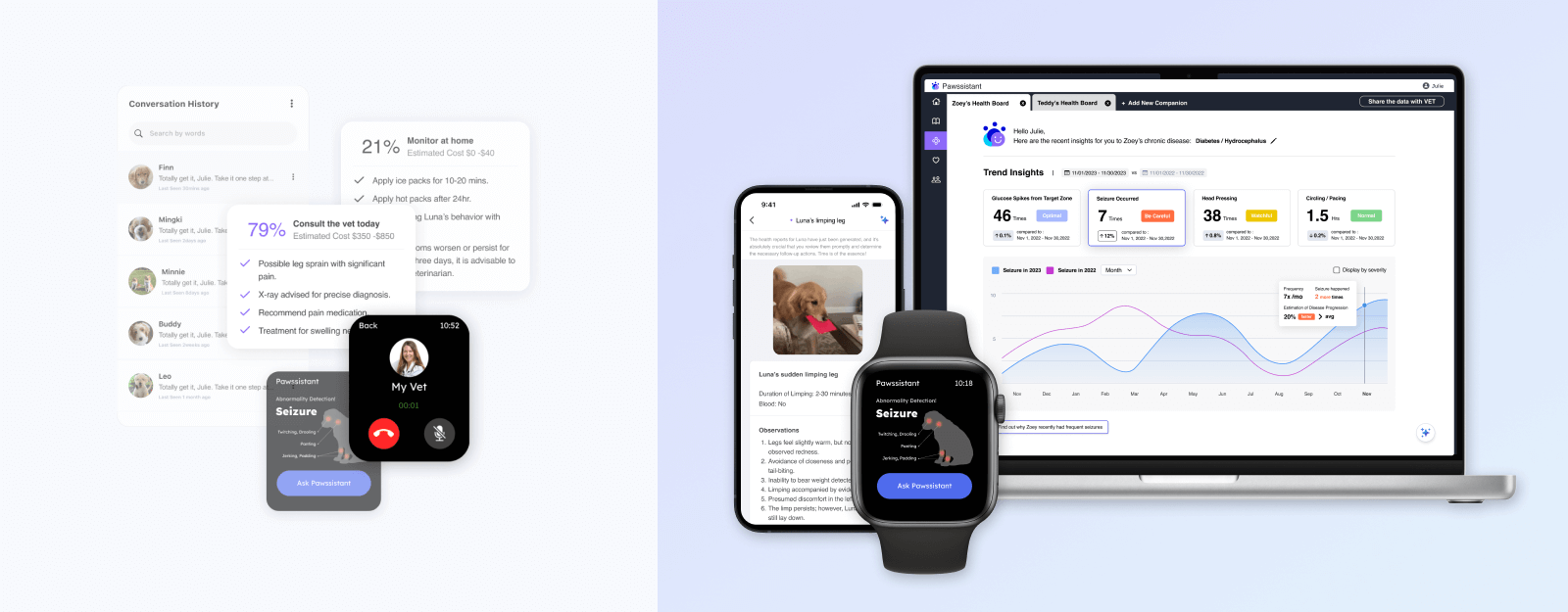
While Pawssistant is designed for many things, it’s not meant to replace a veterinarian. In fact, it’s designed to collaborate with veterinarians and pull from multiple opinions when researching diagnoses and symptoms. In five feedback sessions, veterinarians commented favorably on the app’s AI-driven approach and confirmed the platform’s effectiveness in improving pet care.
Collaboration with veterinary professionals is a critical aspect of the conception and design of Pawssistant, the students say, as it brings credible, expert-vetted guidance to the forefront—ensuring that the advice and information provided in the app is trustworthy and practical.
The students’ user research also broadened the category of caregivers beyond primary owners to include roles like daycare workers, shelter managers, and grooming service professionals. In so doing, Pawsisstant can become a resource for informed decision-making for those managing multiple pets in shelters or vibrant pet daycare facilities.
Collaboration with veterinary professionals is a critical aspect of the conception and design of Pawssistant, the students say, as it brings credible, expert-vetted guidance to the forefront—ensuring that the advice and information provided in the app is trustworthy and practical.
The students’ user research also broadened the category of caregivers beyond primary owners to include roles like daycare workers, shelter managers, and grooming service professionals. In so doing, Pawsisstant can become a resource for informed decision-making for those managing multiple pets in shelters or vibrant pet daycare facilities.
Bringing Humanity to AI
In a world where people often fear that AI will outpace and replace human skills, it was important to the designers that Pawssistant serve as an example of how we can coexist harmoniously with artificial intelligence. Rather than making decisions for the user, the app’s AI acts as a valuable assistant, enhancing the decision-making process and providing recommendations. The app also features a community platform, where users can connect with individuals who have pets facing similar health challenges, enabling them to share experiences, seek advice, and find the emotional support that is often essential in moments of crisis.
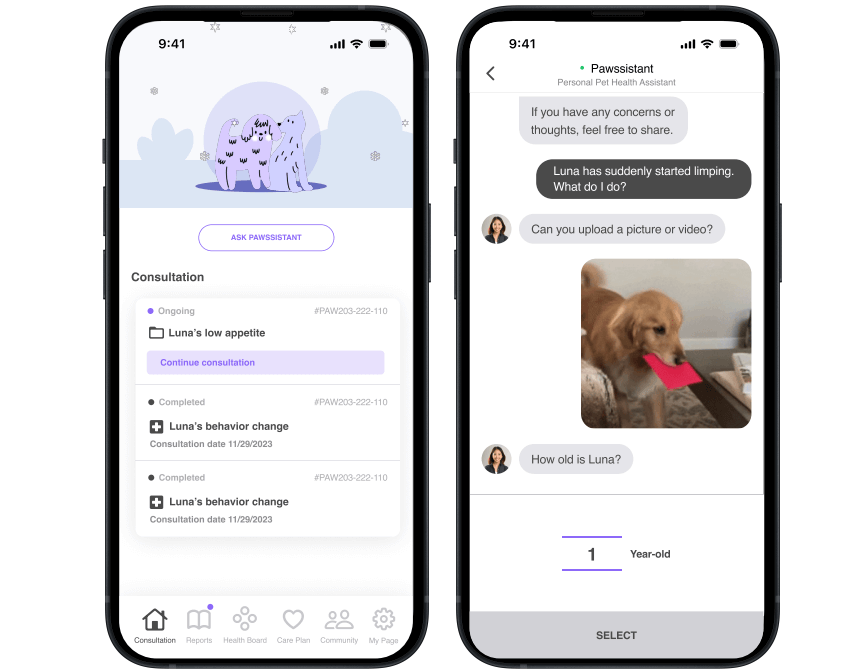
In the end, the goal was to create an intelligent tool not only that helps pet owners determine whether a visit to the vet is necessary but also continuously monitors for chronic diseases, detects abnormalities, and alerts caregivers to any concerning symptoms. By ensuring the wellbeing of pets and providing peace of mind to their caregivers, Pawssistant aspires to be a valuable part of a pet owner’s toolbox that can also lead to cost savings.